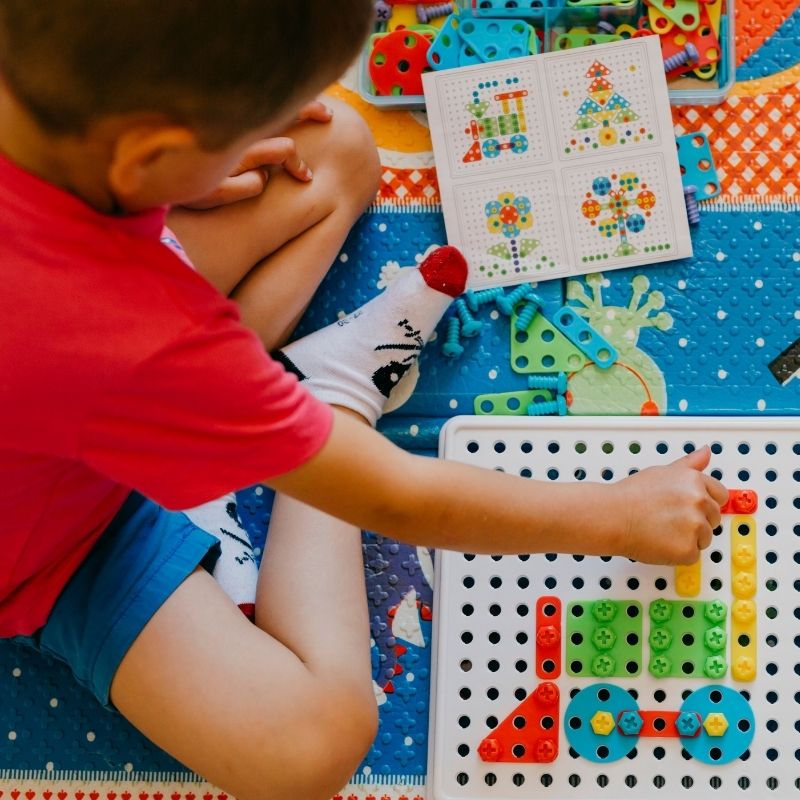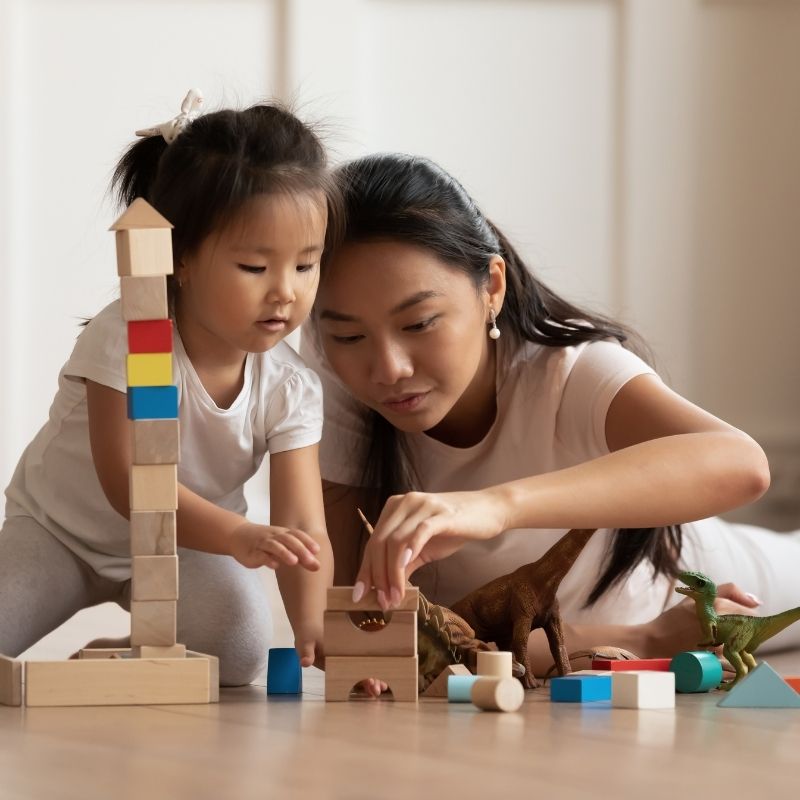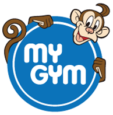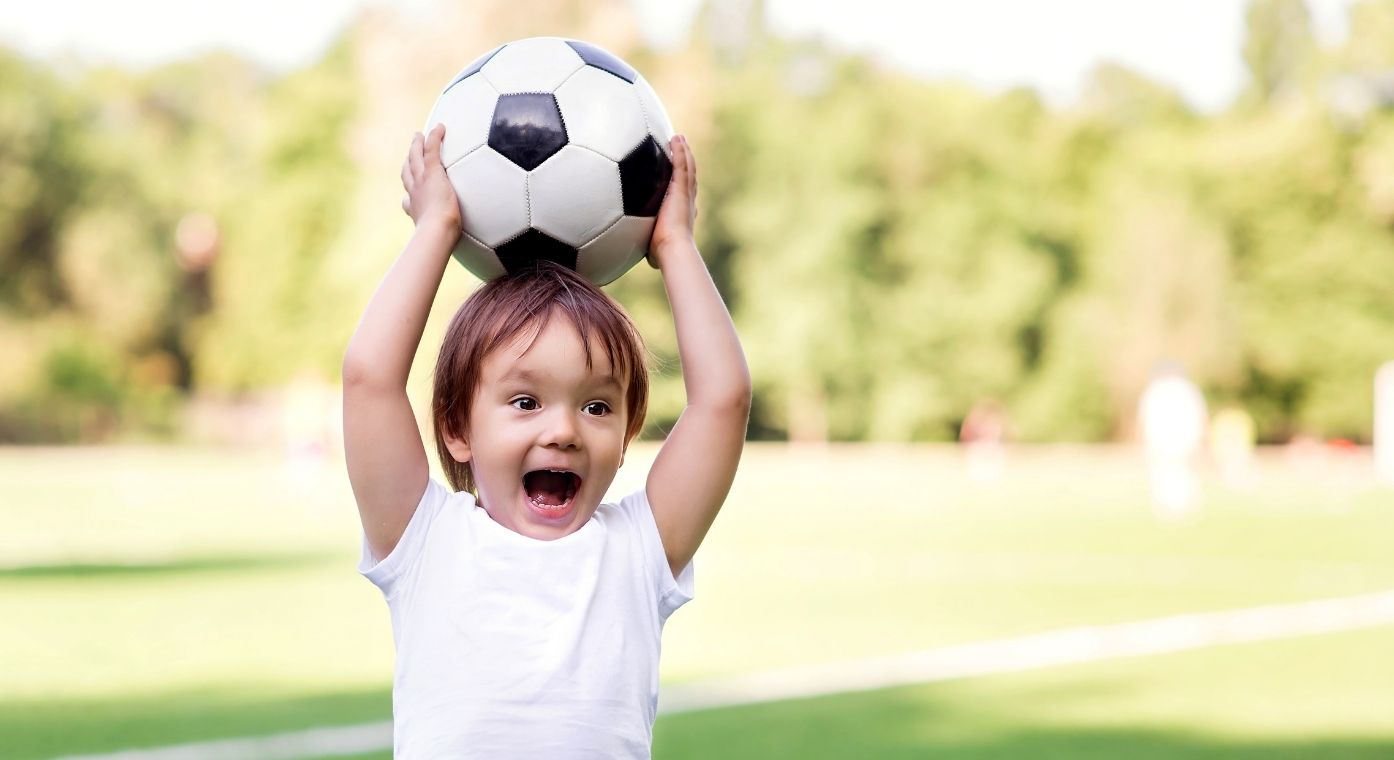Why Psychomotor Learning Is Critical For Children
From conception to 3 years of age, the physical development of the brain progresses at an extraordinary pace. The total brain volume, for instance, doubles within the first year of life and attains 72% of adult size. By the third year, the brain has more than 100 billion neurons and each neuron develops on an average of 15,000 synapses!
This prepares the ground for development at an exponential rate in all domains, including Motor (Gross & Fine), Cognitive, Language, Social & Emotional. The development of a child is a process of evolution from immaturity to maturity, from a state of no control to full control, over self and the environment.
Behind this complex process are numerous biological and environmental factors at play — fine-tuned parenting skills, nurturing care, nutrition and psychomotor activities for children — primary factors that go a long way in promoting a child’s development and towards the realization of its full potentiality.
But what is psychomotor development?

Every child goes through several stages of growth. While the growth pattern remains the same among different children, some children will pass through a phase quickly, while others may take a little longer to develop. Hence, parents need to ensure that all the three domains of development, Psychomotor (Physical), Cognitive (thinking), and Affective (emotions or feeling) are achieved.
Psychomotor stimulation is a physical activity involving programmed movements designed to increase the child’s ability in coordination, manipulation, and dexterity. The first years of your child’s life are the most critical for developing and practising these motor skills.
Motor development is often broadly divided into gross motor and fine motor skills. Gross motor skills involve movements that require large muscles. Such as when the baby is trying to sit up on her own, crawl, rollover, stand up and walk. But when the baby wants to grasp, manipulate an object or wants to scrawl, she would need to use smaller muscles of her wrist, hands and fingers.
Brain function builds from the bottom up. Simpler skills are acquired first, based on which newer and finer skills are learnt. For example, fine motor skills like handling and manipulating small toys form the basis for good pencil grip and early writing skills.
Every baby is different and may develop at different rates. So, if your baby does not do some of these things, that’s okay. She may be attracted to something else that catches her fancy and is more fun to be involved in. It will be great to feel that your baby is developing normally, in her unique way.
Goal-oriented play

Enjoyable playing makes children happy and willing to repeat the same activity again and again as they do not feel that they are training the muscles to work. This impacts motor development improves thinking ability and increases the ability to solve problems.
Goal-oriented play is a form of play that combines a mix of activities that need to be completed sequentially, moving from one to another without a break in between. Increased muscle activity will ensure a smoother flow of blood to the brain in the required quantities. Making it possible for a child to develop motor elements such as strength, durability, agility, speed, balance, and coordination.
Two conclusions can be inferred from goal-oriented play activity. One, focused play helps children develop their motor skills. Two, devoting more time to play will lead to physical fitness and good health.
Role of the environment

Environmental factors play a major role in the early development of a child – while genes provide the blueprint, the environment gives the final shape to the brain. This is why parents have a pivotal role to play in early childhood development.
Development, as stated earlier, occurs from the bottom up, difficult skills build on stable attainment of simpler skills. For example, developing a firmer pencil grip is simpler for a child with a good pincer grasp. A child denied exposure to play with small toys may find it difficult to hold a pencil correctly.
Some environmental factors erect a very protective shield around a child. A mother who breastfeeds, support siblings, and free interaction with peers. Breastfeeding provides not only nutrition but comfort which can lead to improved cognitive development and emotional stability.
Mild stress, like small failures, help build resilience which makes the child emotionally more stable and stronger. Such stress factors may be simple things like spilling a glass of milk or experiencing short term separation when the mother goes to the office.
Overall, nurturing care from a child’s immediate environment promotes development and helps a child attain the best of her potential. All that a child needs is a comforting space, good nutrition and health, safety and opportunities for learning, as well as plenty of cuddling, loving environment full of good cheer.
My Gym
My Gym involves children in dynamic physical activity and movement that help in building neural networks in the brain. Making it easier for children to acquire intellectual skills, navigate complex social situations, and nurture emotional development.
To find out more about how My Gym plays a key role in supporting “whole-child development,” please visit any of our centres. Choose a day when you will be relatively free and come over with your child in tow. Your child could be an infant (as young as 6 months), a toddler or a preschooler, age is not a bar for enrolling.
My Gym has child enrichment programs that lay a firm foundation for your child’s personal, academic and future growth by involving your child in age-appropriate creative learning and problem-solving activities.
Please note: My Gym classrooms are thoroughly sanitized every day — the tables, the chairs, the children’s activity stations and everything else the child might touch is made safe and clean. Please wear a mask, wash hands frequently, and practice social distancing.
Frequently Asked Questions
What is psychomotor development in early childhood?
While every infant goes through several stages of development during early childhood, their cognitive, emotional, and social abilities develop and mature rapidly as they interact with various components of their environment that play a pivotal role in nurturing a child’s holistic growth. Psychomotor development involves a set of physical development exercises that are designed to improve a toddler’s coordination and manipulation abilities, as well as their dexterity.
What is the importance of psychomotor development?
Psychomotor development contributes to a solid foundation for a child’s academic journey and holistic growth. When children learn to interact with factors in their immediate environment, they become more receptive to different perspectives as they progress through their early years of life and discover their own potential to express themselves creatively. They also have a deeper understanding of their own emotions and have more control over their emotional reactions.
What are examples of psychomotor development?
Gross motor skills and fine motor skills such as running, tumbling, squatting, twisting, spinning, rolling, bouncing a ball, balancing, and hopping foster psychomotor learning in toddlers. Psychomotor development includes both physical development activities and cognitive development exercises that increase a child’s dexterity and coordination. Environmental influences are equally important in encouraging psychomotor development.
What is the difference between motor skills and psychomotor skills?
Gross motor exercises include foundational skills that stimulate movements of larger muscles, including arms, legs, and feet, that aid the movement of our entire body. Toddlers develop gross motor capabilities that can improve their balance and coordination. Psychomotor learning refers to physical activities that are designed to demonstrate fine motor skills, such as playing an instrument or building a paper castle.
How do psychomotor developments influence learning?
Psychomotor development facilitates a child’s motor, social, emotional, and cognitive development, making it easier for them to adapt to new learning approaches at all stages of early childhood development. Children with strong psychomotor capabilities tend to comprehend complex topics with greater ease. It also encourages children to express their thoughts and ideas creatively. Thus, psychomotor skills enhance learning experiences in children throughout their academic journey.
Why it is important to consider the child’s psychomotor?
Being an essential part of early childhood development, psychomotor learning helps children understand and control their own body movements in a way that not only facilitates the development of gross motor skills and fine motor skills but also stimulates their cognitive, social, and emotional capacities, which enhance their learning experience and promote holistic growth. It also ignites creativity in children and enables them to harness their innate potential.



